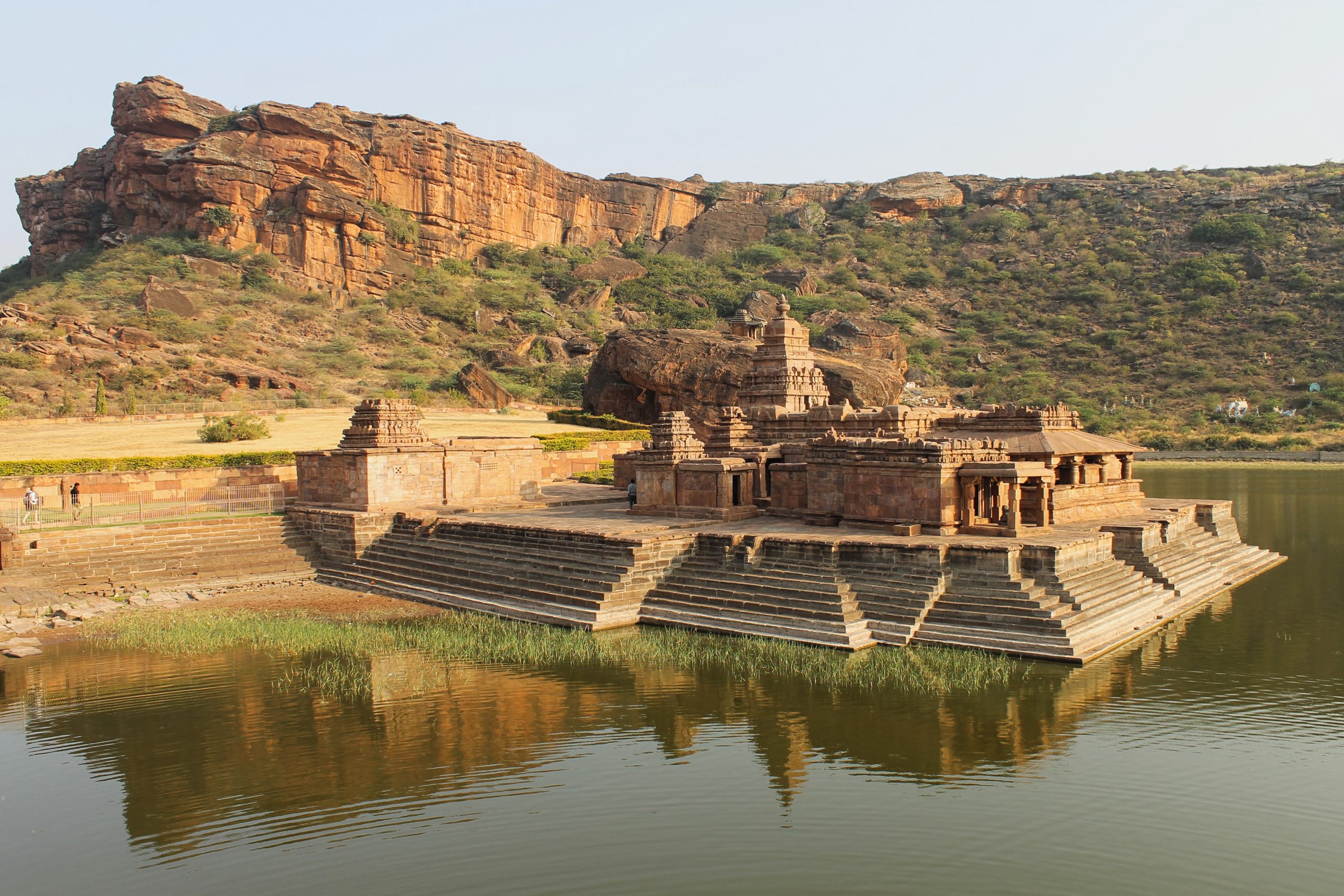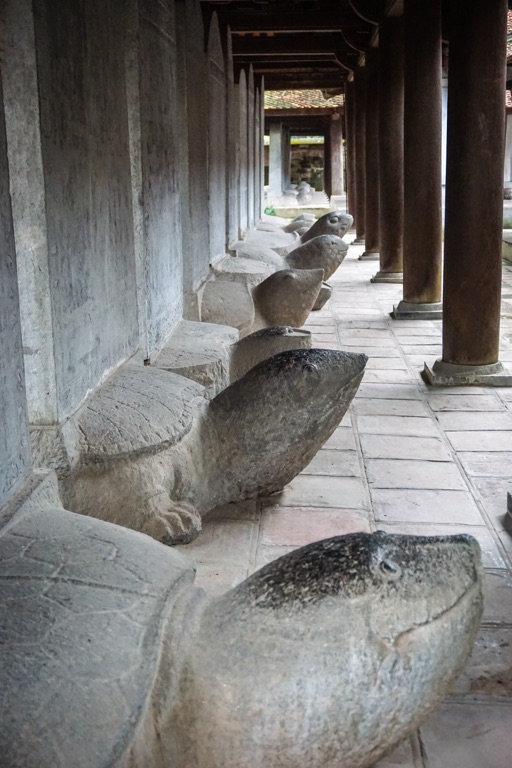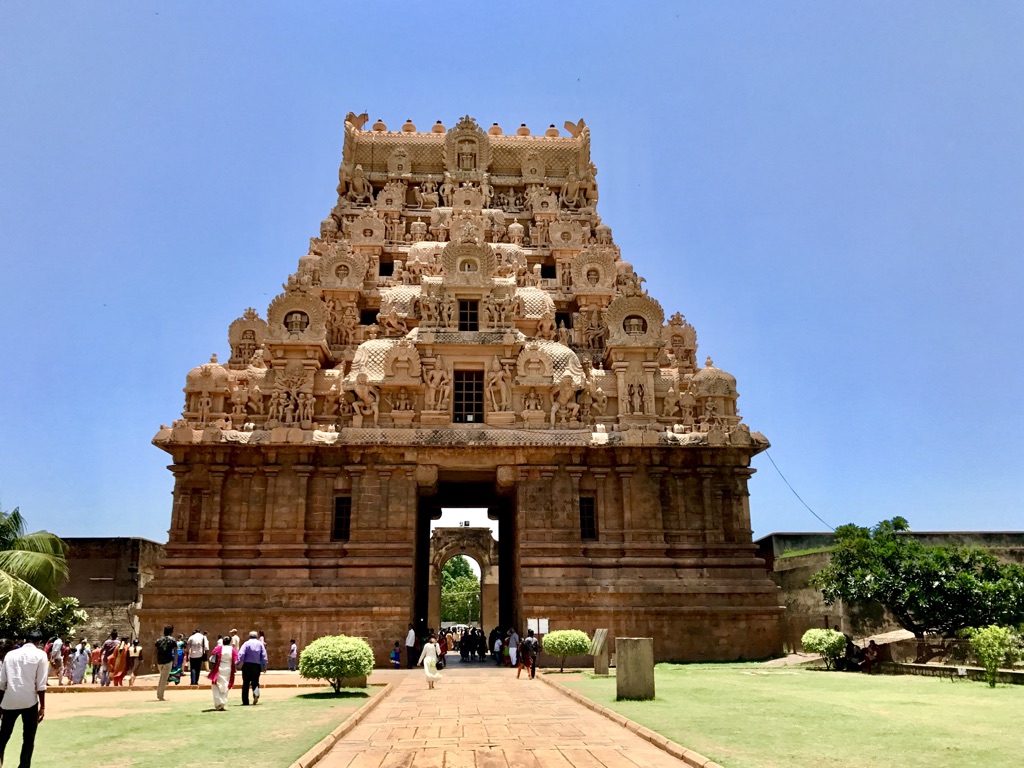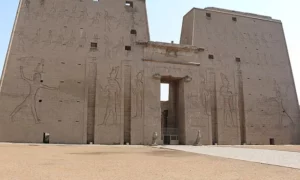The Temple of Edfu, an ancient Egyptian temple located on the west bank of the Nile in Edfu, Upper Egypt, stands as a remarkable testament to religious beliefs and architectural prowess. Dedicated to the falcon god Horus, it is one of the best-preserved cult temples in Egypt. Its construction began in 237 BC during the reign of Ptolemy III Euergetes and was completed in 57 BC. This majestic structure not only served as a place of worship but also played a significant role in the political and spiritual life of ancient Egypt.
Religious Structures

The Bhutanatha Group of Temples
The Bhutanatha group of temples is a cluster of sandstone temples located in Badami, Karnataka, India. These ancient structures, dedicated to the deity Bhutanatha, showcase the architectural prowess of the Chalukya dynasty. They sit on the eastern bank of the Agastya lake, reflecting a harmonious blend of Dravidian and Nagara architectural styles. The temples date back to the 7th and 11th centuries, offering a window into the religious and cultural life of the time.

Gunung Kawi Temple
Gunung Kawi Temple is a striking archaeological site on Bali, Indonesia. It features a series of rock-cut candi (shrines) carved into the face of a rock cliff. This temple complex is a blend of Hindu and Buddhist influences and dates back to the 11th century. It is believed to be dedicated to King Anak Wungsu of the Udayana dynasty and his favorite queens. Gunung Kawi Temple is a serene place that offers a glimpse into Bali’s rich past.

The Temple of Literature (Văn Miếu Quốc Tử Giám)
Văn Miếu Quốc Tử Giám, also known as the Temple of Literature, is a renowned historical site in Hanoi, Vietnam. It was established in 1070 under Emperor Lý Thánh Tông of the Lý dynasty. Initially, it served as a Confucian temple, but in 1076, it became home to the Imperial Academy, Vietnam’s first national university. The site honors education and literature, with monuments and steles dedicated to scholars and academics. It is a prime example of traditional Vietnamese architecture and a symbol of the country’s dedication to education and the arts.

Hoysaleswara temple
The Hoysaleswara temple is a stunning example of Hoysala architecture from the 12th century. Located in Halebidu, Karnataka, India, it was dedicated to Lord Shiva. The temple is renowned for its intricate sculptures and detailed carvings. It stands as a testament to the skill and artistry of the Hoysala craftsmen. The temple’s construction began around 1121 CE and continued for several decades. Despite its incomplete status, it remains a significant heritage site and a masterpiece of Indian art.

Brihadeeswarar Temple
The Brihadeeswarar Temple, also known as the Big Temple, is a marvel of ancient Indian architecture and a testament to the grandeur of the Chola dynasty. Located in Thanjavur, Tamil Nadu, it is a Hindu temple dedicated to Lord Shiva. Built by Emperor Rajaraja Chola I in 1010 AD, the temple is a part of the UNESCO World Heritage Site known as the “Great Living Chola Temples.” Its towering vimana (temple tower) stands at about 66 meters, making it one of the tallest of its kind. The temple’s intricate sculptures, frescoes, and architectural expertise reflect the zenith of Chola art and engineering.

